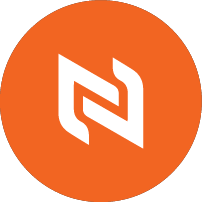Ediscovery Pricing Models Have Changed
Our drive for simpler, transparent invoicing wound up inspiring us to eliminate data charges in ediscovery software. Let’s just say, our clients were stoked.
Data-volume has long been the default measuring stick for ediscovery software pricing models. The gigabyte (GB) of electronically stored information is data’s defining unit of measure. And, selling software to end-users “by the GB” is ubiquitous in the industry.
This long-time industry standard is a flawed model, fraught with unpredictability and value-imbalance for buyers.
That’s why in the summer of 2018, Nextpoint eliminated ediscovery data charges for all clients and thousands of software users. This is how it happened.
Despite our best efforts to make data-pricing easy to understand, consistent, and predictable – it just is not.
A simple and clear ediscovery pricing model
Our story began with client invoicing. It had grown more complicated than we liked. Despite our best efforts, the complexity had crept in incrementally over the last decade or so.
Ironically, our drive to “relentlessly simplify” led to tweaking our data-based pricing packages quite frequently. We regularly looked to simplify pricing for clients. We wanted to make it as low, transparent, and predictable as possible.
But this meant that by 2018, our large client roster was on a multitude of data volume-based pricing plans. Our invoicing process began to feel bloated and confusing. We needed to take a step back and evaluate. We were, after all, following the industry’s pricing convention . Looking back, that was our mistake.
Data-based pricing created confusion. Our guiding principle has always been to clarify the inherently complex for our clients. Despite our best efforts to make data-pricing easy to understand, consistent, and predictable – it just is not.
So, we put an end to all data charges of any kind. Now clients could stop worrying about how much data they might have, or what type, or how much it will expand when processed. We launched our new, predictable “per-user” ediscovery pricing model for three compelling reasons.
 1 / Ediscovery data is messy and unpredictable
1 / Ediscovery data is messy and unpredictable
When your software bill is based on data volume, it necessitates a constant and clear understanding of – you guessed it – DATA VOLUME.
But, data is messy and data volume is never clear or predictable. Data can contain innumerable file types, from various software versions, native to multiple operating systems. File size can swing dramatically depending on the filetype. There are critical relationships within datasets to preserve, data expansion to account for, and so forth. All this makes predicting your actual monthly data volume extraordinarily difficult.
When pricing by data volume, we were forcing law firms to learn things they did not want/need to learn. It shouldn’t be critical for lawyers to become experts in the anomalies of various types of data.
And for our part, we needed a more precise answer to the simple question, “How much will this cost?” than “It depends.” We owed it to our clients. Our clients owed it to their end-clients. And, we owed it to ourselves. We could do better.
 2 / Ediscovery data charges act as a tax levied on users
2 / Ediscovery data charges act as a tax levied on users
Data-usage pricing was acting much like a tax for clients. It added friction to their decision-making processes, and would dissuade them from getting started with cases early and importing all relevant data.
This makes sense, and follows basic economic theory on price elasticity. If your ediscovery pricing model is per-minute, users will try desperately to use fewer minutes.
But, Nextpoint software is purpose-built to deliver command of not only large ediscovery data volumes, but all data relevant to a litigation: pleadings, depositions, transcripts, exhibits, etc. Unpredictable data charges was breeding hesitation in our clients, and forcing complicated, “messy data” billing conversations with their clients. No one was winning.
Well, I guess we were winning. We were garnering lots of new clients, but the data-based pricing was adding a level of complexity that was good for no one.
 3 / Ediscovery SOFTWARE (not data) is the one true value here
3 / Ediscovery SOFTWARE (not data) is the one true value here
“Data does not equal discovery. Discovery is still strategy — it’s still finding the facts you need.” Our friend, Kelly Twigger wrote that back in 2017.
Following that theory, software has a higher valuable than data. Data is a big, hairy dragon. Software is your Excalibur. It’s the tool. It’s the workflow to execute your discovery strategy. And if it is good, as ours is, it makes your team more efficient, accurate, and in the end, saves time and money. Its value is crystal clear.
The volume of data in any case is, by and large, orthogonal to our clients’ concerns. Data is an inelegant measure of the real value our clients and their clients realize from using Nextpoint software in the litigation process.
It’s a little like this: You amble into a barbershop for your monthly haircut. You expect to pay for the execution of the service – namely, a professional haircut.
Your barber tells you what that service will cost. It is clear that this cost is directly tied to his professional salon acumen, the cost of his sharp scissors, clippers, hydraulic barber-chair, combs, pomade, etc. The cost is fixed, transparent and predictable.
Now, if your barber told you that he was going to charge you by the number of hairs on your head, that would be ludicrous. The number is out of your control, and unknowable. Further, it may be totally out of proportion with the work to be done (you have a luxurious mane, but only need a trim).
Nextpoint software users are more efficient and productive legal teams. And the software value is tied directly to the “real work” getting done. Our clients can be more definitive about ediscovery costs with end-clients. They can pass costs through in direct alignment with the work-product created.
Rolling out unlimited data ediscovery pricing model
It became obvious to us that the best way to provide cost certainty for our clients was to drop any and all charges tied to data volume. So that’s what we did.
In late summer of 2018 we did a (soft) rollout of an unlimited data pricing model where clients have a flat, per-user, monthly cost. No data fees. No processing fees. No hosting fees. No export fees.
How many software users do you need on your project team to tackle a litigation? That’s what you pay for. Now, that’s absolutely predictable, and in the end, much cheaper for our clients and their clients.
User-based ediscovery software pricing is a game-changer
As any good SaaS software company does, we tested it. We interviewed our long-standing clients, prospective clients, and newbies. We rolled it out incrementally to understand how users would react. Measured account usage and user behavior in our software.
The results have been overwhelming positive.
Delivering our SaaS in a way that makes the value clear, and the investment predictable, has thrilled existing clients and brought onboard a bevy of new ones. And, our user-based licensing models can now be paired with bundles of on-demand, litigation support and services – thanks to feedback from our dedicated client roster.
Throughout our company and our user base, we can feel the difference. And actually hear it from clients:
“Per-GB pricing has been a frustration point for both us and our clients. Nextpoint has allowed us to give our clients predictable pricing, because we know upfront that it doesn’t matter how many gigabytes of files they have. The price will be the same.” —Anand Mathew, Principal, Palmersheim & Mathew
A better day for managing ediscovery cost
The challenges of electronic discovery are not getting any easier. Data governance and security challenges are increasing. Data volumes continue to grow at an exponential rate.
By removing data from the ediscovery pricing model and cost equation, we’re able to provide cost certainty for our clients and empower our users to focus on the challenges of today, and those of the future. Litigation is unpredictable enough. Ediscovery software pricing shouldn’t be.

Check out our interview with Palmersheim & Mathew to see how the litigation boutique leverages Nextpoint to deliver more value to their clients.







